Question of the Week #2: August 4, 2016
“Neil, what is causing the leaves on my plants to turn brown?”
Browned leaves can be the result of a wide variety of problems. I thought you might appreciate five photos that have been posted to my Facebook page recently, each with basically that same question wondering why the leaves turned brown.
Brown/black leaves on apples, pears
Fire blight is a bacterial infection that only infects members of the Rose Family of plants. Pears and apples are at the top of the list, along with pyracanthas, loquats and cotoneasters. Bees transmit the disease as they visit the plants’ flowers, so applying agricultural streptomycin during full bloom is the prime means of control. If fire blight still shows up as the growing season develops, prune the dead twigs out and disinfect your pruning tools between each cut by dipping them in a bucket of 90 percent water and 10 percent chlorine bleach.
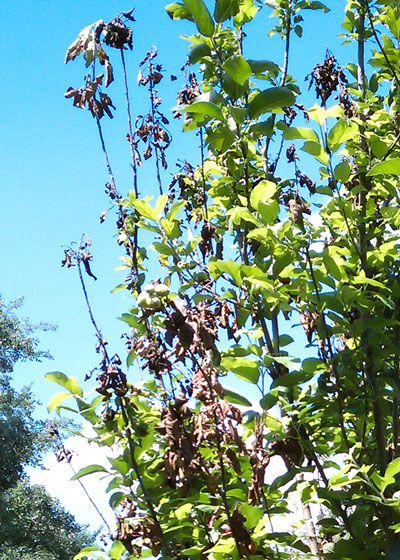
Fire blight on apples causes leaves to turn dark brown (or black in pears). Only terminal portions of the twigs will be impacted initially.
Squash plants suddenly dying
This type of sudden death of the plants is usually due to squash vine borers. They’re fat, nasty larvae that develop in the stems of the plants. There is no control once they start doing their damage. Good sanitation is your main way of staying ahead of them. That practice will also help with squash bugs, another common threat.
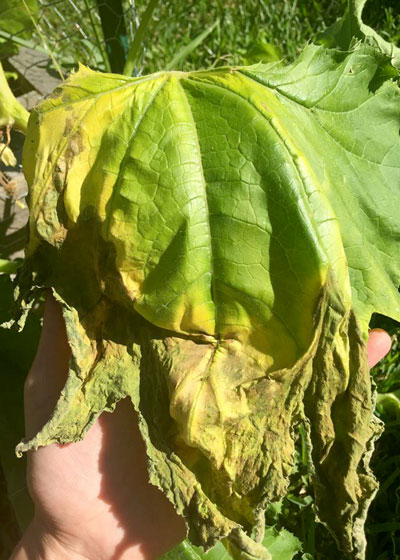
Results of damage of squash vine borers
Live oak leaves puckered, brown
I told the person who posted this photo on my Facebook page that I was having trouble seeing some of the detail, but that I was virtually sure this is the aftermath of oak leaf blister. Live oaks across Texas, for whatever the reason, were attacked by this disease this past spring – worst I’ve ever seen. The blisters from the spring turned dry and brown during early summer, and that’s what we’re seeing here. The good news is that oak leaf blister is essentially harmless. This tree should leaf out normally come spring.
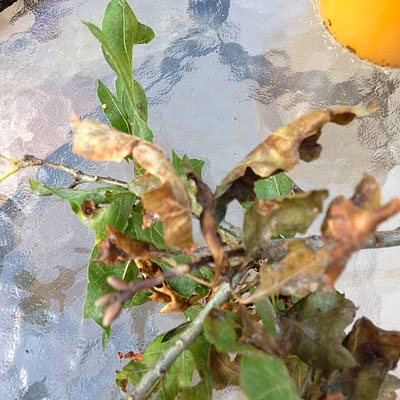
Summer appearance of oak leaf blister
Japanese maple leaves browned and crisp
These great little trees must wonder what happened to the cool, wet weather of their native Japan. When we grow them here in Texas, it’s not uncommon for them to have browned margins to their leaves. However, this example is extreme. Japanese maples need rich, highly organic soils (preferably acidic), consistent moisture, and temperatures in the 80s. Because that last one doesn’t match up with Texas, we need to plant them in shade instead. Mine get no direct sun after about 8 A.M.
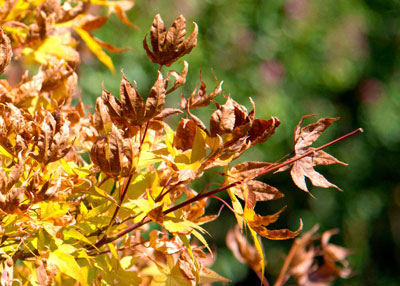
Severe summer scorch of Japanese maple leaves
Vinca groundcover leaves are brown, stuck together
If you examine these plants’ leaves closely, you’ll find there are droppings inside them. Those are the leave-behinds of vinca leafrollers. The larvae feed on the leaves and use them as safe harbors as they pupate, turning into moths and flying away to repeat the process. They usually hit Texas plantings in late July through early September, which means that application of a systemic insecticide in early or mid-July should stop them from doing this level of damage. The good news is that they haven’t killed vinca plants in the decades we’ve been seeing them. The plants bounce right back with new growth late in the fall.
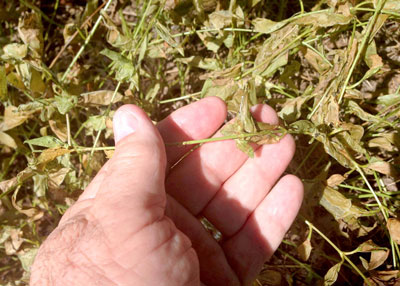
Groundcover vinca suffering from leafrollers
